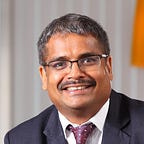We Need More Girls and Women in Science and Technology
Today we celebrate the International Day of Women and Girls in Science. Women have made incredible achievements in science and technology for centuries, often unknown to the world, or only honored retrospectively. The role of women in science became more known in 1903 when Marie Curie became the first women to win a Nobel Prize in Physics, and then went on to win a second Nobel Prize in Chemistry in 1911. Marie Curie is only one example of countless female scientists and engineers who helped achieve scientific breakthroughs and social progress.
However, there are still not enough women in sciences today. Less than 30 percent of the world’s researchers are women based on data from the UNESCO Institute of Statistics (UIS). Not every girl or women has the opportunity yet to follow Marie Curie’s footsteps. To reduce the gender gap, we need to help more women to pursue a career in science, technology, engineering and mathematics (STEM).
Gender equality in science and technology is not only vital to achieve the sustainable development goals, it is also a critical element for creating a flourishing culture of innovation in the enterprise. A highly diverse team with different perspectives and skill sets fuels a company’s ability to innovate and stay competitive.
A commitment to diversity, inclusion and equality is a core element of SAP’s business strategy and purpose. Our goal is to increase the number of women in leadership positions year-over-year to 30 percent women by the end of 2022. Last year SAP Labs India was honored to be named among the Best Workplaces for Women by the Great Place to Work Institute. We have made good progress, but we also realized that creating a great workplace for women is not enough. Not all girls and women have access to education that will allow them to pursue a career in science and technology, especially not girls and women from rural regions. Thereby, we decided to set programs in place in India that help girls and women across India get access to education and IT skills training.
One year ago, we launched new regional and national educational initiatives that had a focus on bringing more girls and women into technology professions in partnership with the Indian government. One of them is a collaboration with the Department of Information Technology, Biotechnology and Science &Technology (ITBT) of the Government of Karnataka in India, a part of ITBT’s “Yuva Yuga” program, to give underprivileged youth access to technology skills training. In 2018 alone, we jointly taught more than 5,000 youth across the state of Karnataka, with about half of these students being women. The initiative focuses on developing Industry 4.0 skills, with a focus on data science and machine learning.
The second program is a partnership with the Indian government (NITI Aayog) to adopt 100 Atal Tinkering Laboratories (ATL) to promote science, technology, engineering and mathematics (STEM) education among secondary school children across India. Approximately 52 percent of all students are girls. The initiative is building skill sets for the internet of things, robotics, digital skilling and data visualization and teaches key programming languages, including C/C++, and Java Script.
In addition, we have been running a Rural Digital Skills Development Initiative in Rajasthan since 2017 with 30 towns. Based on its positive results, we will expand this program to 230 towns this year. To equip women with digital skilling, we introduced five mobile vans. These vans exclusively teach to female students who are not able to travel or have to drop out of the education due to familial reasons. This year we will expand the initiatives into more locations, with the aim to train and upskill around 60,000 young women and men for entry-level jobs.
We’ve learned that broadening access to education entails more than setting up the infrastructure, the school, classes, materials, and transportation. It first and foremost requires overcoming stereotypes. Part of all programs is educating the families about the opportunities their girls can have with access to education. Only when girls can see the possibilities for their future and get access to education can we achieve gender parity in science and technology, not just in India, but globally.
